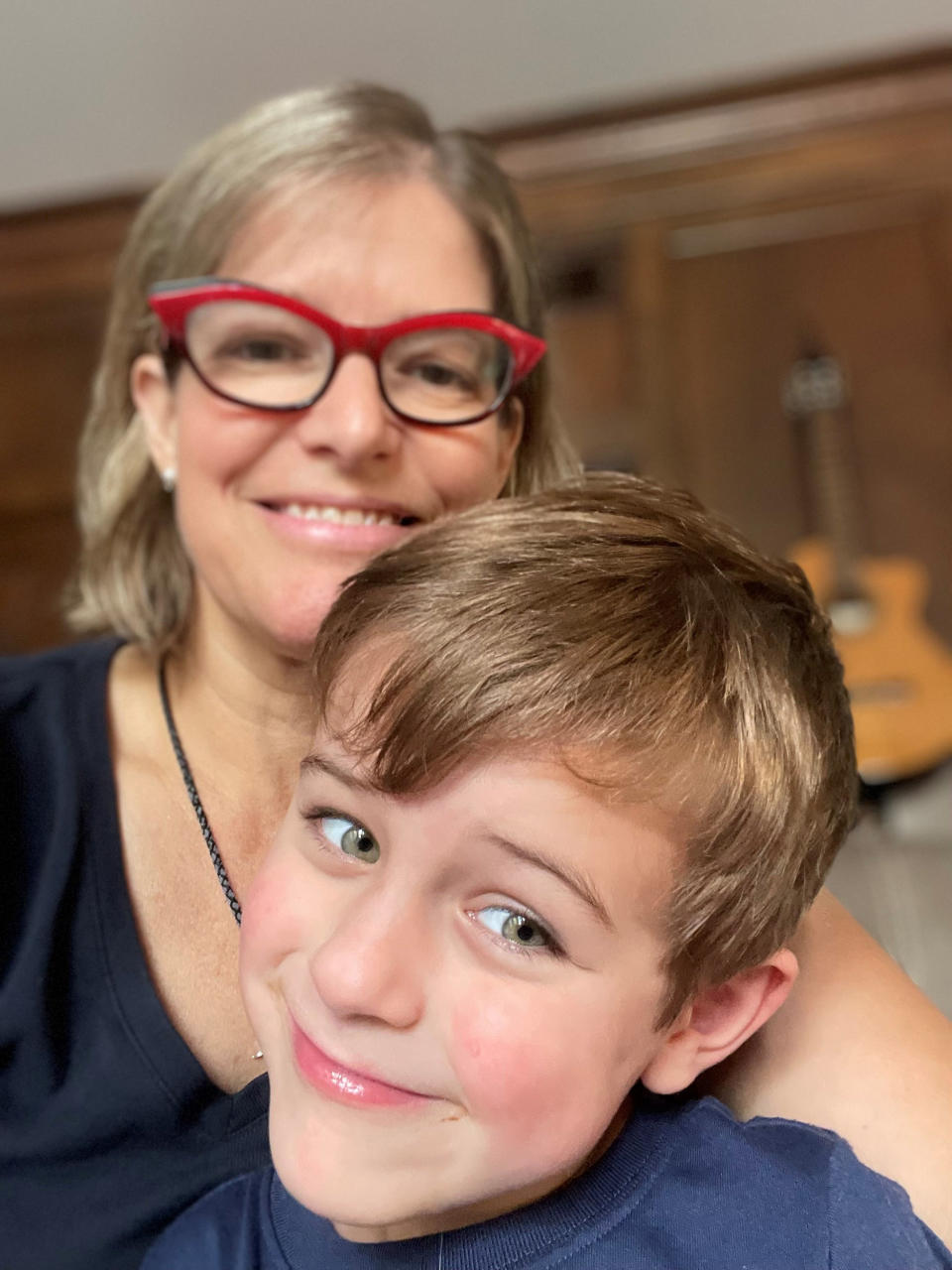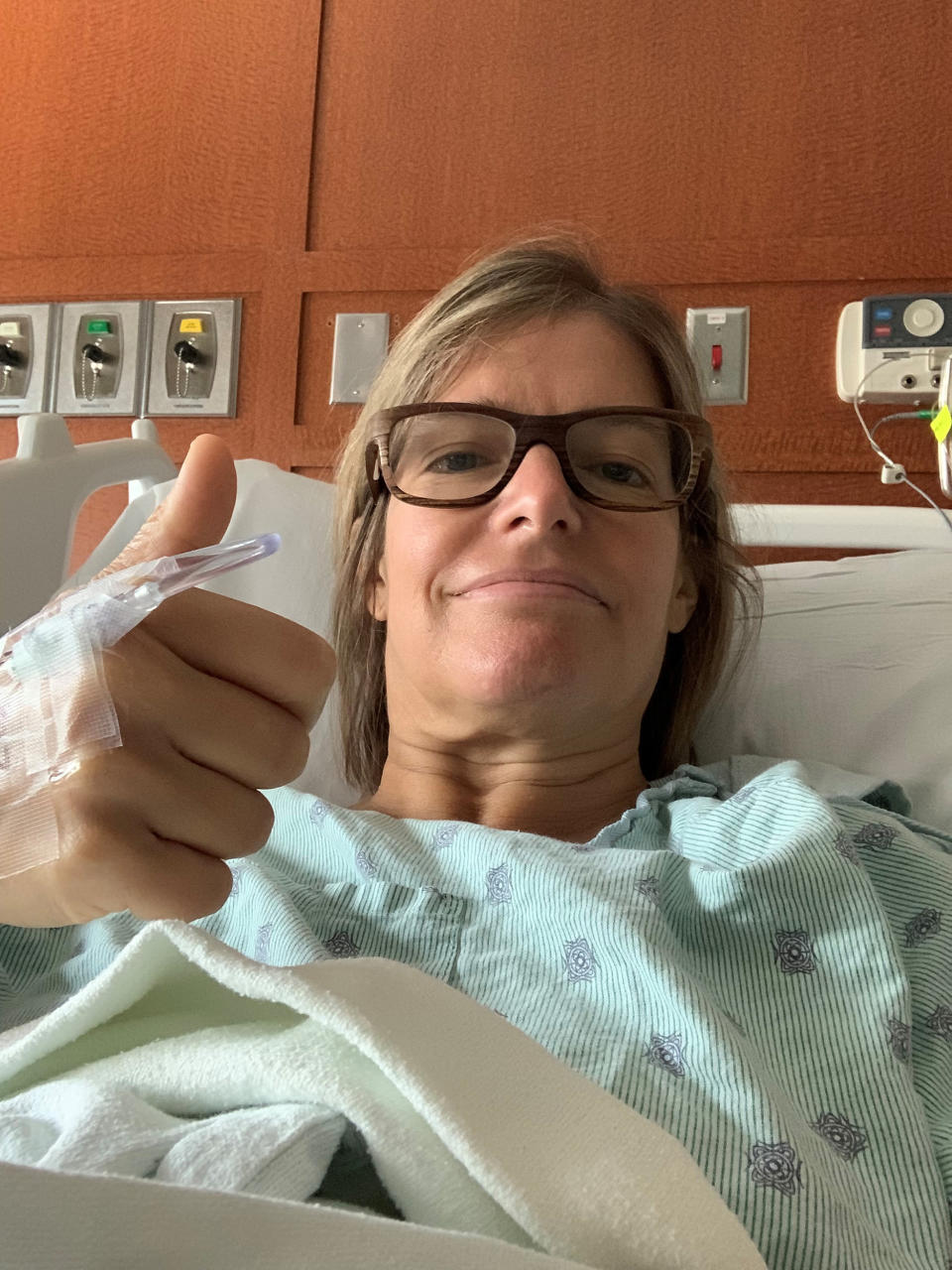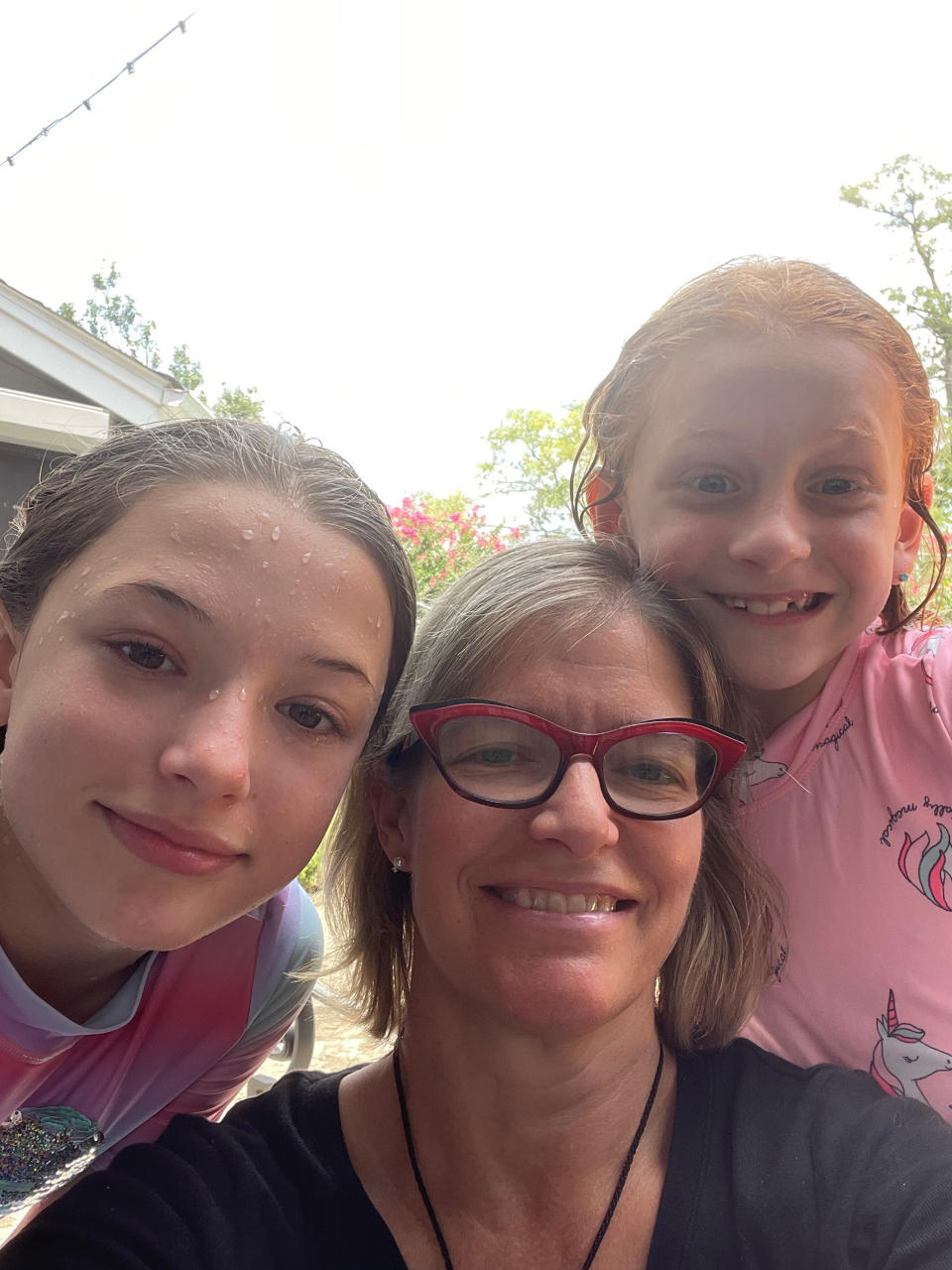Doctor thought symptom was part of menopause. It was a sign of a precancerous condition
When the irregular bleeding first started, Dr. Jennifer Wargo suspected it was just part of menopause. But after spending her career in cancer research and treatment, she decided to talk to a colleagues about it — just to be safe. That conversation led to her doctor discovering precancerous cells and treating her early.

“I had uterine bleeding. Do I really want to broadcast this?” Wargo, a melanoma surgical oncologist and co-leader of the Melanoma Moon Shot, part of MD Anderson’s Program for Innovative Microbiome and Translational Research, asked herself. “I actually did because people need to know about this and because not only are people not aware about it — brushing this off as normal menopause and not getting treated — there’s also a lack of funding to study this.”
When symptoms become worrisome
This winter, Wargo started experiencing heavy bleeding. At first, the 51-year-old believed that aging caused it. She was perimenopausal and women sometimes experience some spotting or irregular periods as they transition into menopause.
“I have been busy working, treating patients with cancer, doing research, and taking care of the kids and started to have symptoms,” she explained. “I was like, ‘Maybe this is just normal menopause.’”
But the bleeding continued for three weeks, then six weeks. As the bleeding became heavier and she started passing clots, Wargo realized that this was not normal. She was losing so much blood that it impacted her overall health. She noticed when she ran with the family dog, she wasn’t as fast and became winded easily.
“I just had a sense that there was something wrong,” she said.

What’s more, she knew that bleeding in menopause can be a “real warning sign.” All too often people believe spotting during menopause is normal and don’t speak to their doctors about it. While bleeding after menopause can be due to thinner tissue of the vagina and vulva, there are other conditions that can cause bleeding, including fibroids and sometimes cancer, according to the American College of Obstetricians and Gynecologists (ACOG).
“If you’ve already gone through menopause and you’re spotting, that’s a dangerous sign,” Wargo said. “Women need to go see their doctor. They need to get an exam and they really need to pay attention to that.”
Due to a family history of cancer and her work as an oncologist, Wargo knew how essential early detection is. Fifteen years earlier, her mother was diagnosed with pancreatic cancer and died six months after.
“I reached out to a friend of mine who is a surgeon,” Wargo explained. “She took me on as a patient, did the biopsy in the office. It didn’t really look that ominous but then she said, ‘You know just to be on the safe side, let’s bring you into the operating room.’”
After the surgical procedure, Wargo learned her diagnosis: She had atypical endometrial hyperplasia, a condition where the lining of the uterus thickens and can cause abnormal bleeding. While it’s not cancer, it can lead to increased risk of endometrial and uterine cancers. It often impacts women after menopause because they have too much estrogen and are no longer producing progesterone, according to ACOG.
Once her biopsy revealed her precancerous condition, Wargo opted for a total hysterectomy due to the higher risk of developing cancer. During the procedure, her doctor only found precancerous cells.
“I personally have not needed additional treatment,” Wargo said. “This is very likely cured with surgery and very unlikely to come back.”
She still visits with her doctor every six months to make sure there’s no sign of precancerous or cancerous growths.
“That’s the thing about this type of condition, either precancerous or early cancer, if you catch it early you can be cured with surgery,” she said.
‘Terrified’
Being a cancer doctor didn't prepare Wargo for grappling with her diagnosis and treatment.
“It was a bit of an emotional roller coaster,” she said. “Here, I am a cancer surgeon, cancer researcher at the No. 1 cancer center, facing cancer myself. It was really terrifying with three young children and that thought of what happens if something happens during the surgery, or I do have advanced cancer? How do I prepare for that?”

But she was proactive about her health even when she felt scared. Wargo hopes her experience encourages others to undergo their normal cancer screenings, such as pap smears, mammograms, PSA tests and mole checks.
“People shouldn’t be afraid. I can tell you that I was terrified, absolutely, because of what I have seen with my mom, what I have seen with my patients,” Wargo said. “I was absolutely terrified, but I was also really fueled by knowing that I needed to do something because if I waited it could have been far worse.”

